When you want to go to Green Bank Observatory, make sure you download your map beforehand.
That’s because Green Bank Observatory is in the center of the NRQZ (National Radio Quiet Zone) and the closer you get, the quieter it is. They work with the community to maintain as close to radio silence as possible to enable scientific research using the world’s largest steerable telescope – The Green Bank Telescope (GBT).
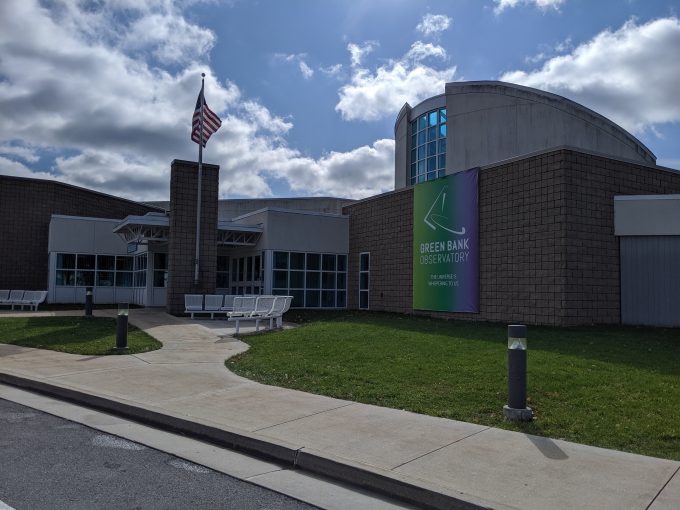
We purchased tickets for a tour starting about an hour after we arrived. At the time of writing, adult tickets for the tour are only $6. We were able to look around the exhibition hall while we waited which is full of activities to bring the science of the Green Bank Observatory to life.
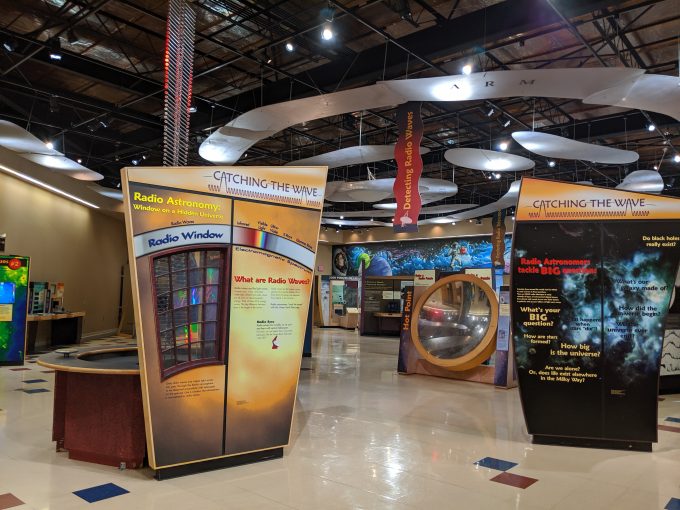
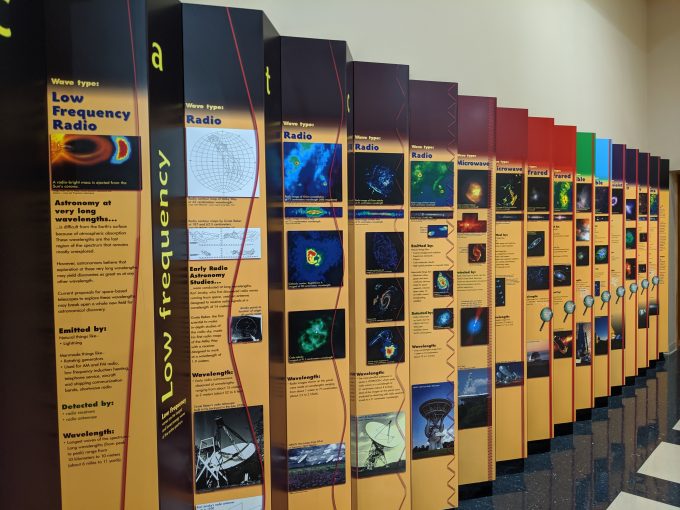
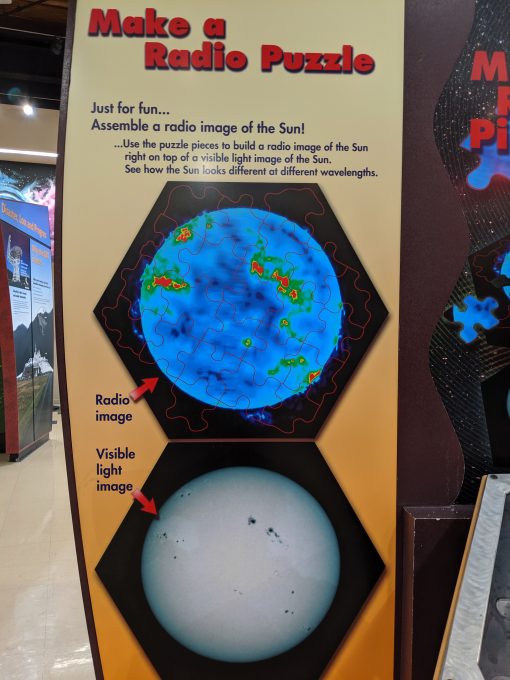
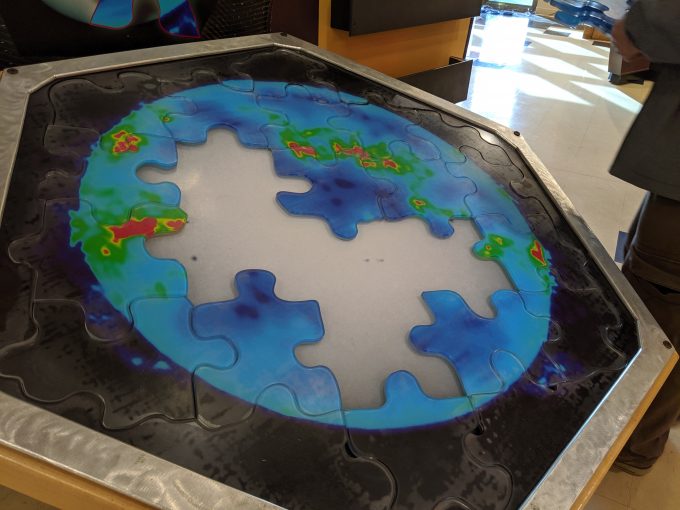
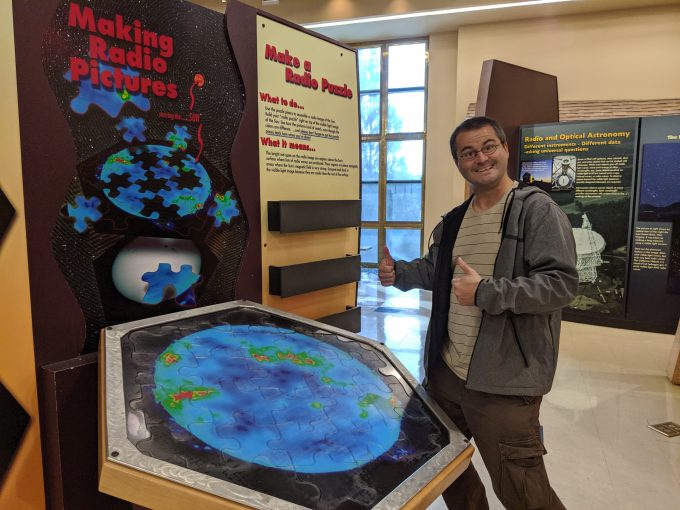
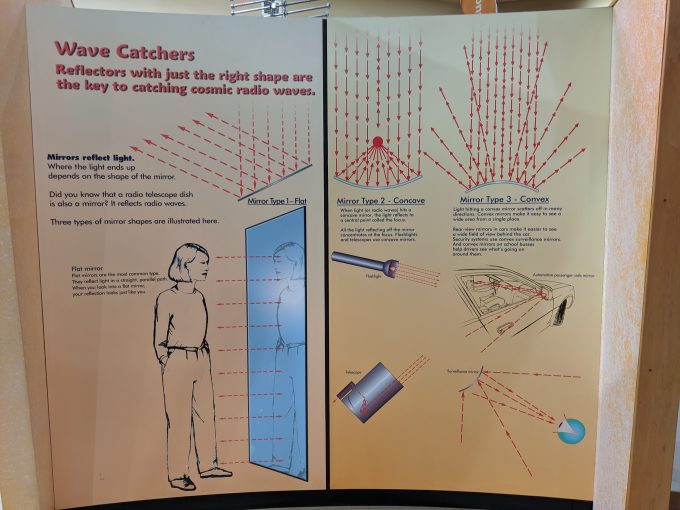

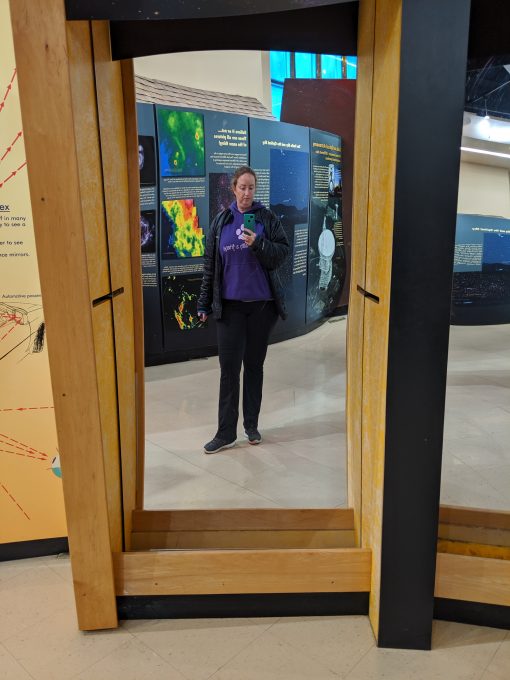
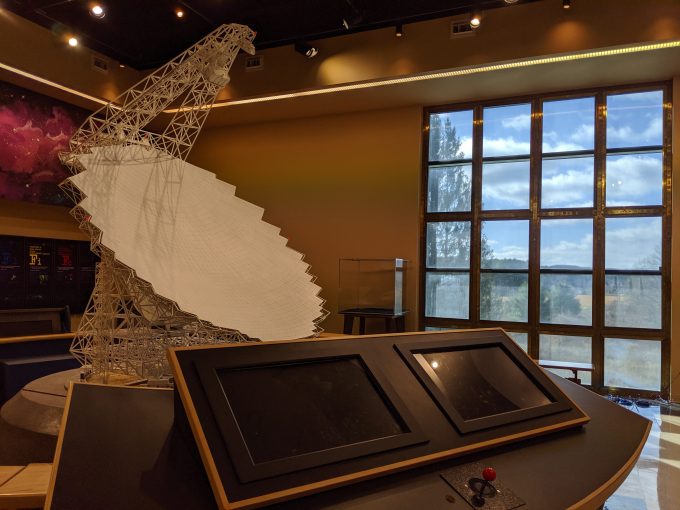
One of the most interesting things we learned was about the Drake Equation which is used to calculate the possible number of communicating civilizations in the universe. This work is critical to SETI – the Search for Extraterrestrial Intelligence.
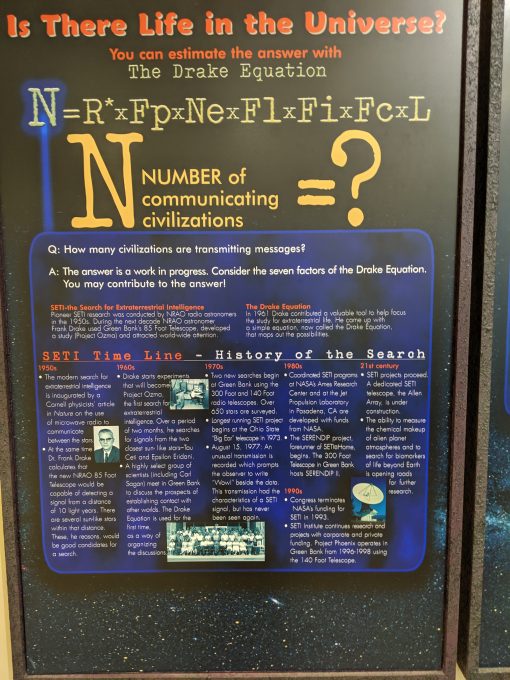

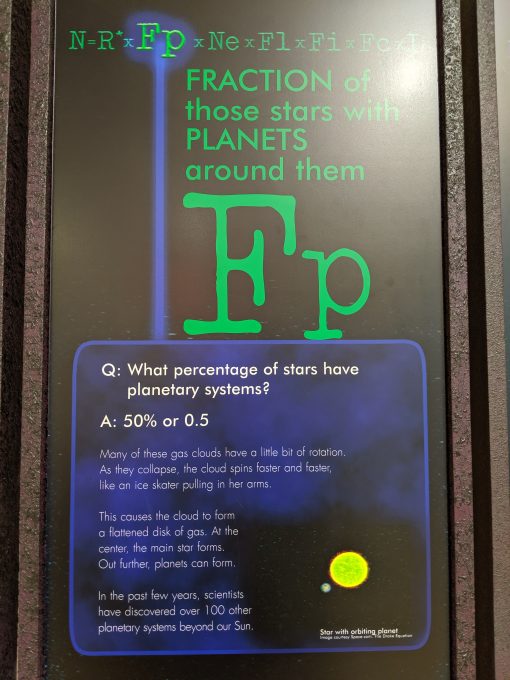

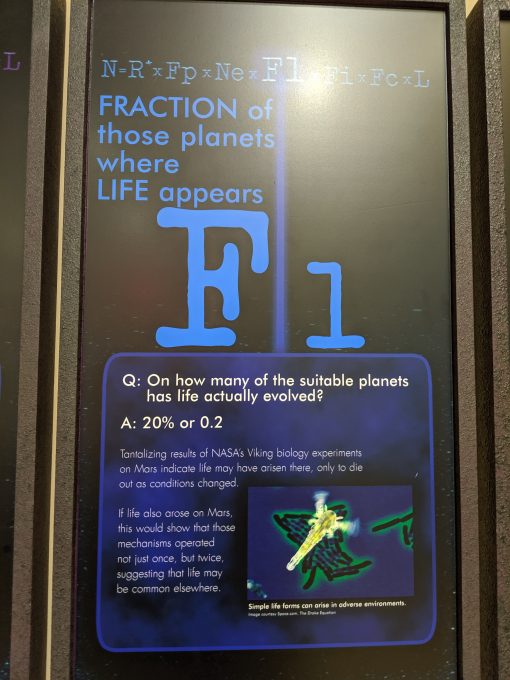
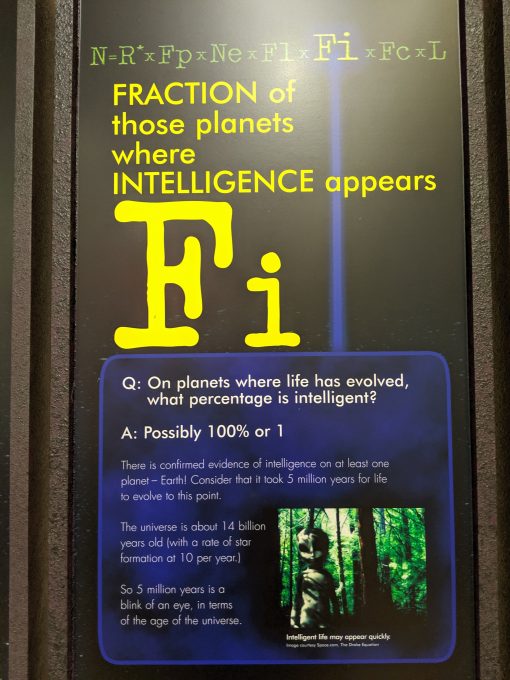
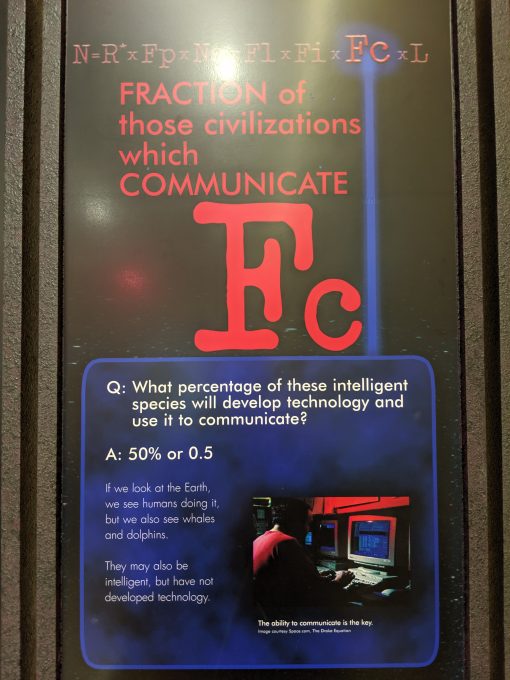
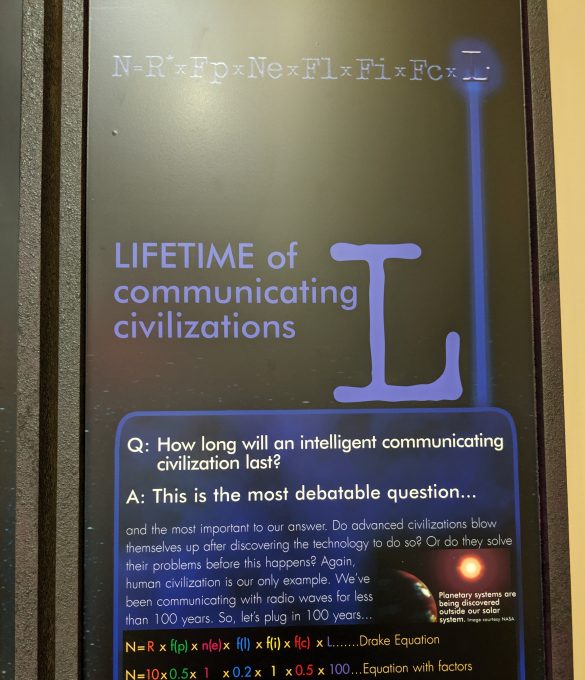
Spoiler Alert: The next image has the answer, so if you’re doing the math, don’t look until you’re ready!
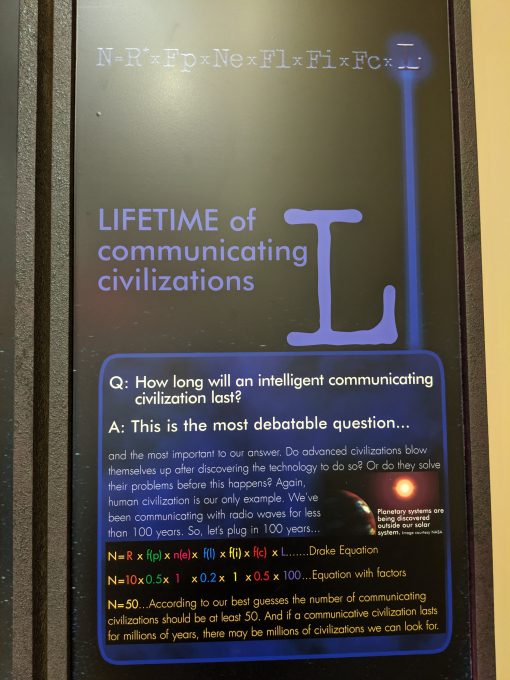
Before the tour there’s a presentation in their theater. There’s a movie about the history of the Green Bank Observatory and an experiment showing how cell phones and key fobs can cause interference with the telescope. This is used to explain the Faraday Cage system, a copper box that’s on the tour bus, a large one that surrounds the control room for the GBT telescope and even microwaves for scientists’ lunches!
You’re only allowed to take photos at the start of the tour. After you visit the observation deck you have to turn off all devices so they don’t interfere with the quiet sounds the scientists are listening to that come from space. If you have something like a Fitbit that can’t be turned off, it can go in the Faraday Cage on the bus. You can also do this as a walking tour for free, but the tech rules still apply. Any vehicles that operate beyond the gate are also diesel because even spark plugs interfere with the telescopes.
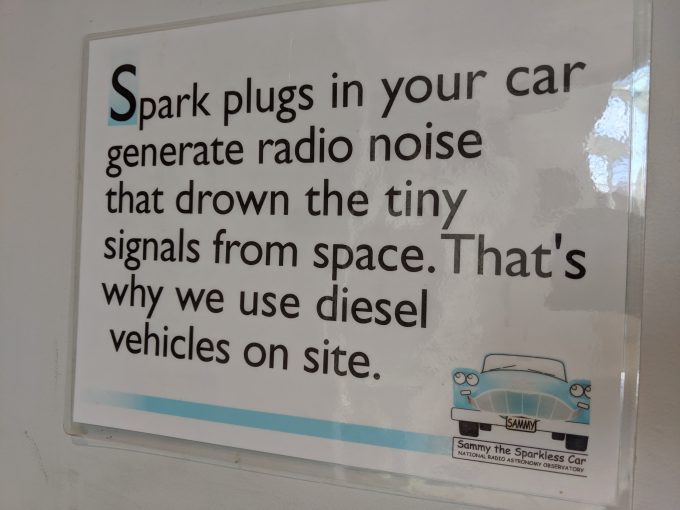
When you get beyond the gate, unless you have a film camera you can’t get pictures. The gift shop sells disposable film cameras if you’d like to take photos as you go around.
Here’s what the telescopes look like though. They’re all named for the size of their dish, with the exception of the Green Bank Telescope. The GBT’s dish is 2.3 acres big (it can hold 2 football fields within it) and each of its 90+ panels can be adjusted within 0.1mm to perfect the positioning of the dish to collect the waves in the receiver. It can receive radio waves that have wavelengths between 3 meters and 3mm. At 485 feet, it’s taller than the Statue of Liberty.
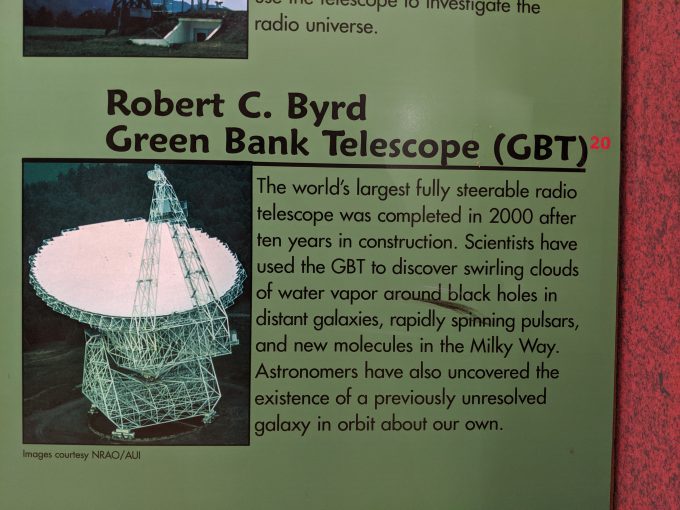
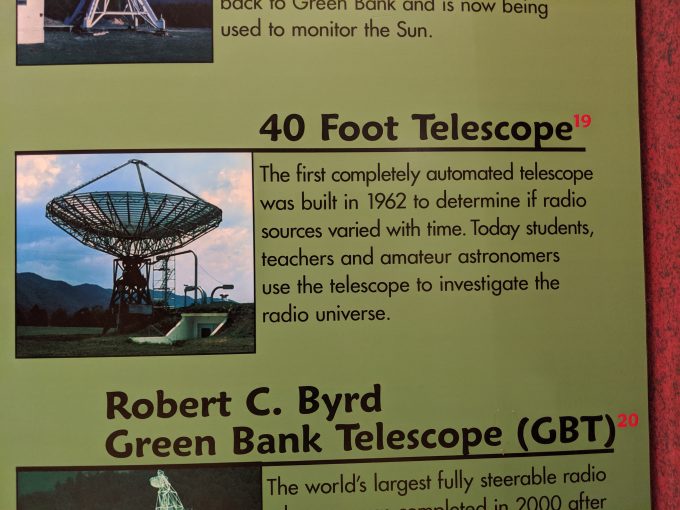
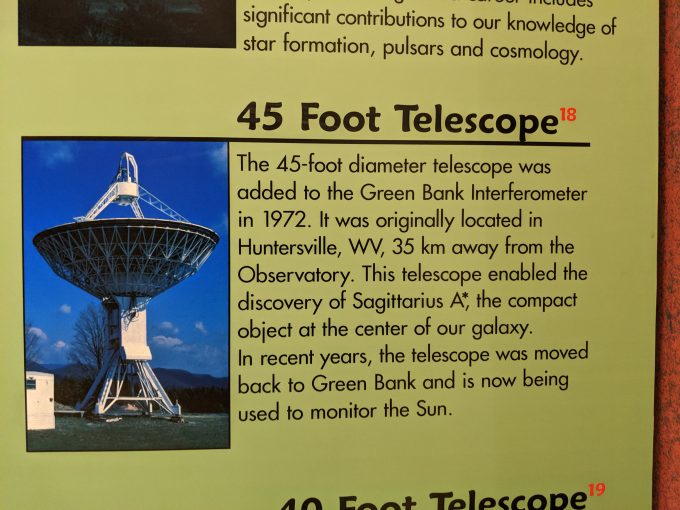
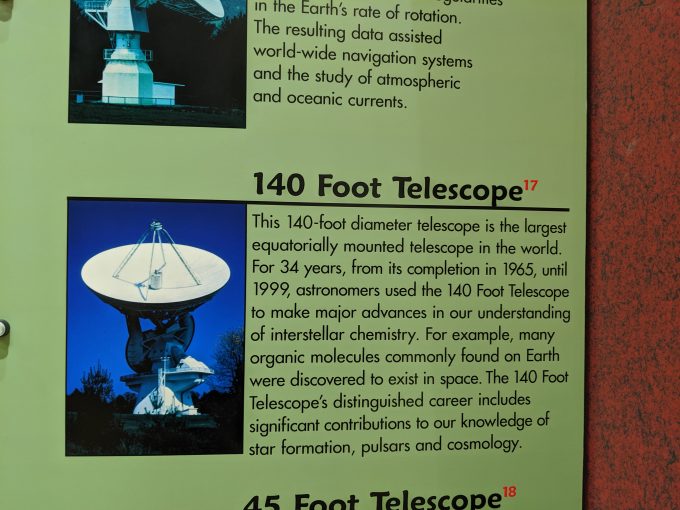
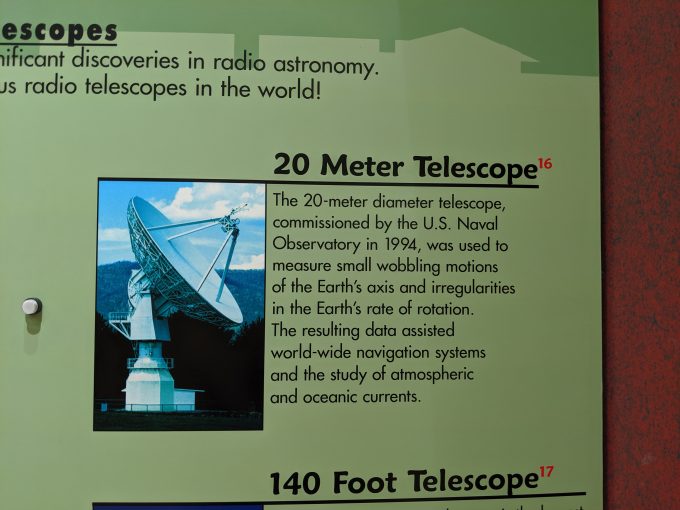
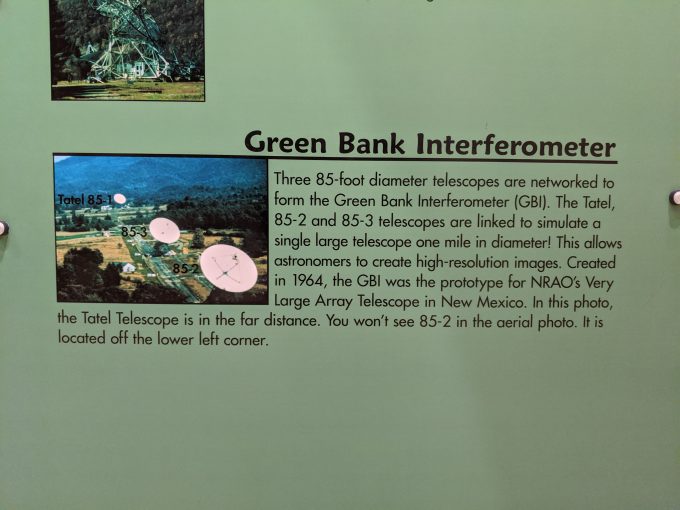
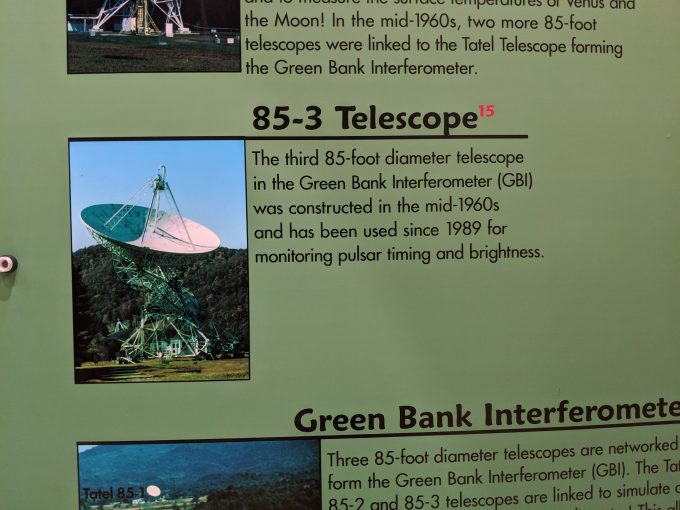
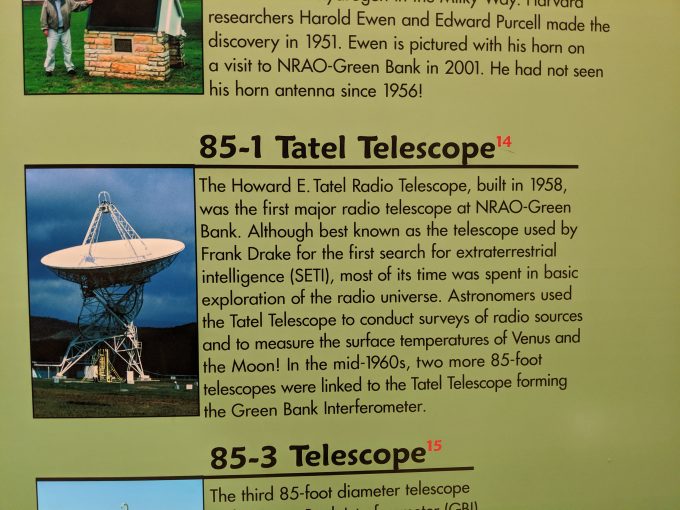
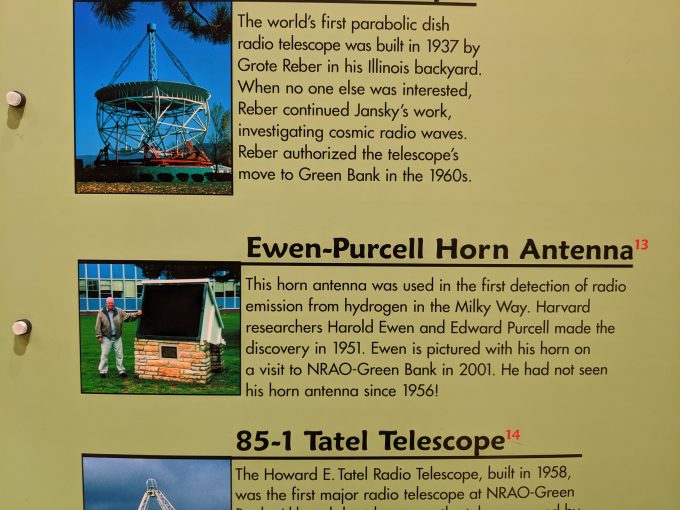
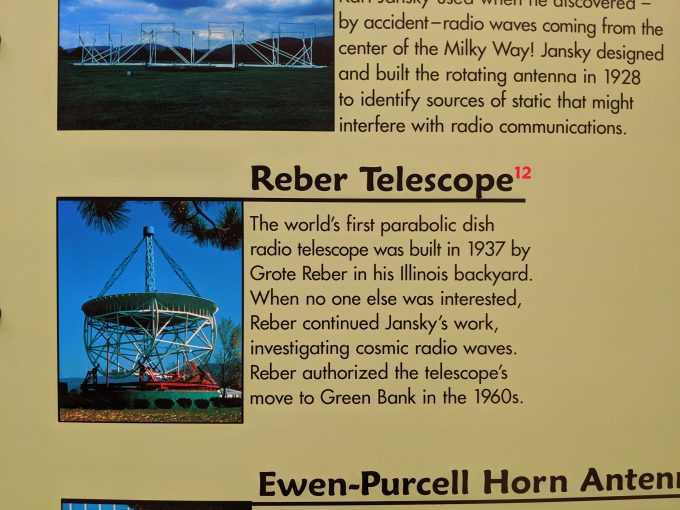
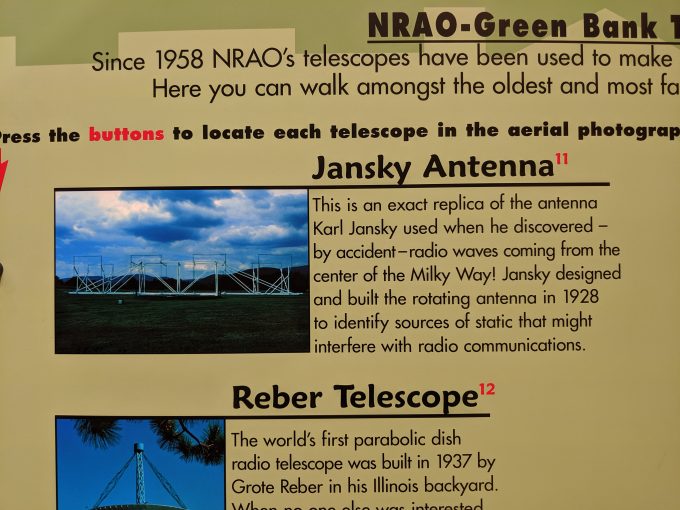
Here’s the National Radio Quiet Zone which includes parts of 3 different states.
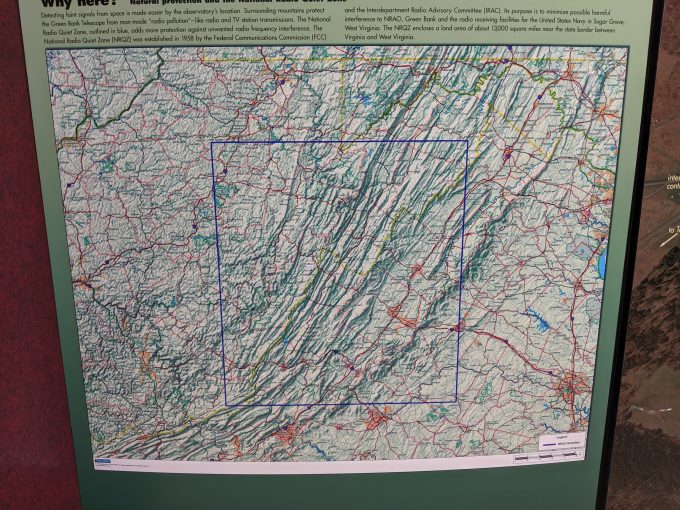
Here’s the Green Bank Telescope as seen from the visitor’s center and the observation deck.
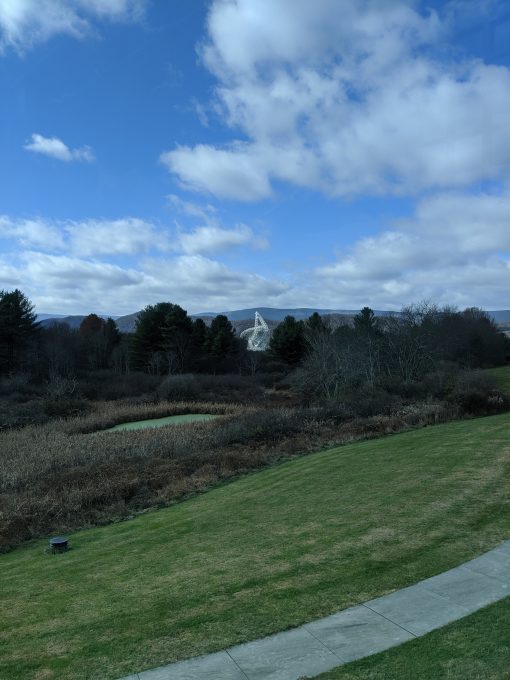
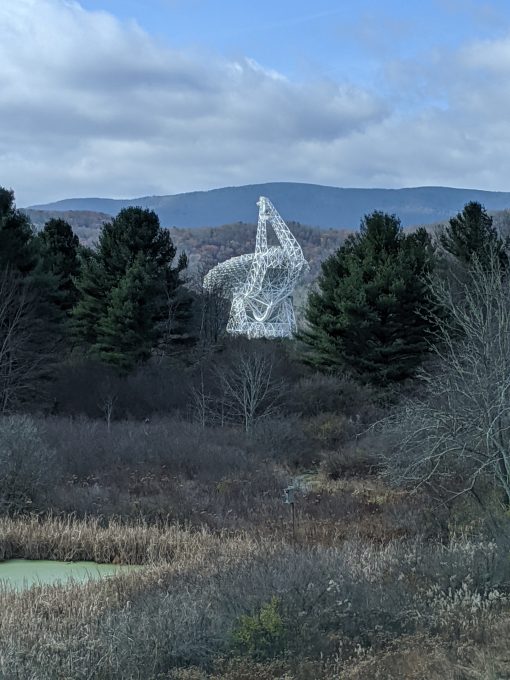
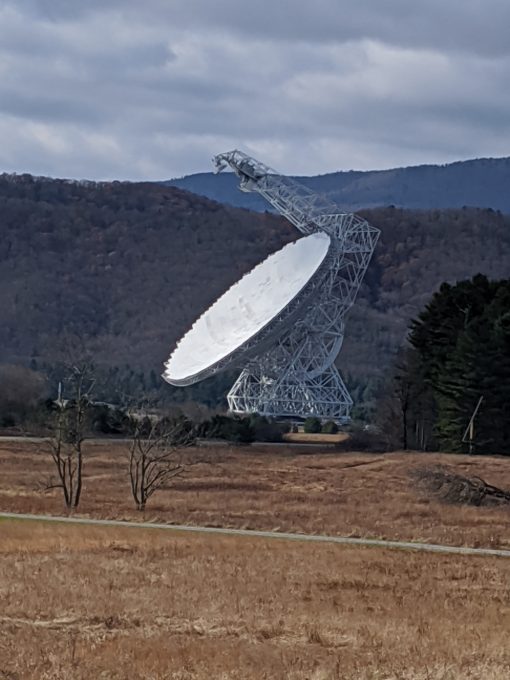
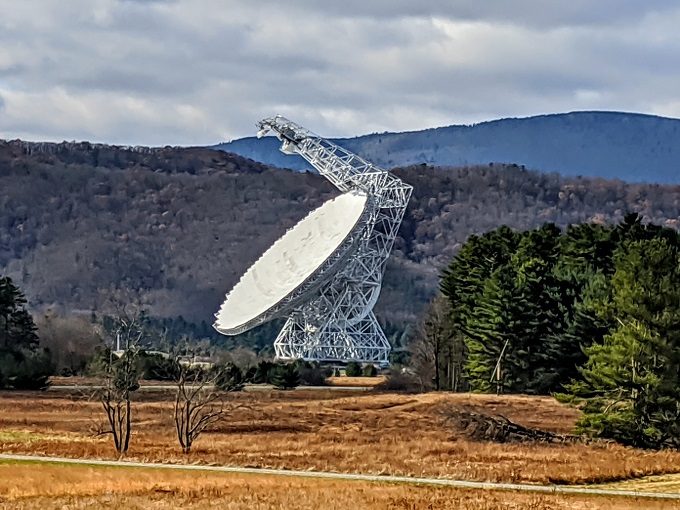
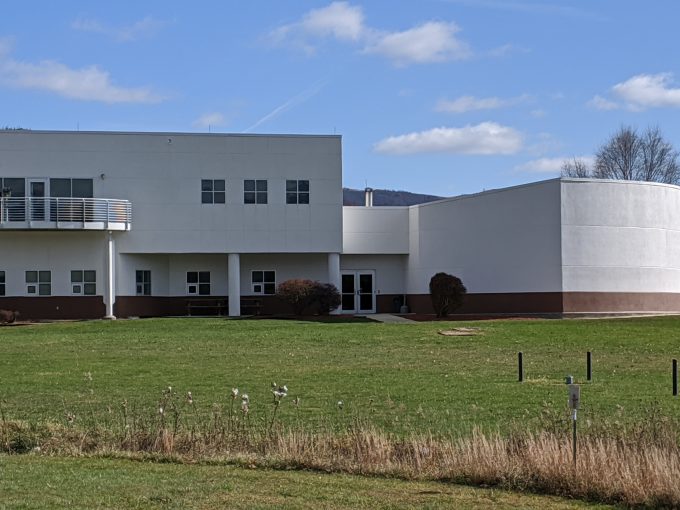
Finally, we learned about EMITT – the Electro-Magnetic Interference Tracking Truck. Using EMITT, scientists are able to find local sources of radio interference and work with the community to find a solution that works for everyone.
One example is the local Dollar General. Their store had a sliding door on a radio frequency that interfered with the GBT, which EMITT was able to identify as the source. The Green Bank Observatory worked with the store to find a radio frequency that worked on the doors but didn’t disturb the science. Another time, EMITT ended up finding out that the National Park released flying squirrels that were fitted with radio trackers to observe their habits. Unfortunately, this couldn’t be remedied so everyone had to wait the 6 months for the tracker batteries to die.
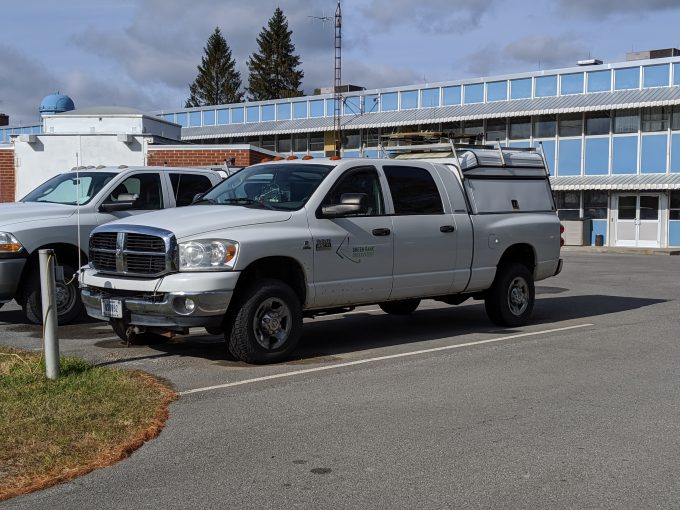
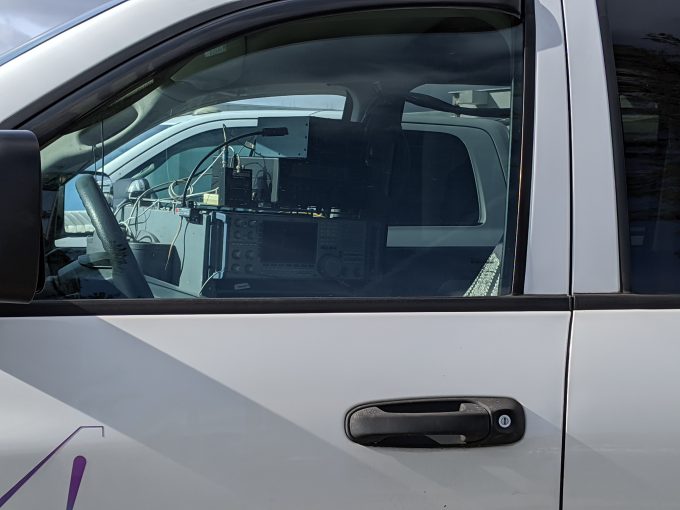
If you’re interested in the science at the Green Bank Observatory, you can follow the GBT. We recommend a visit if you find yourself near Green Bank, WV.
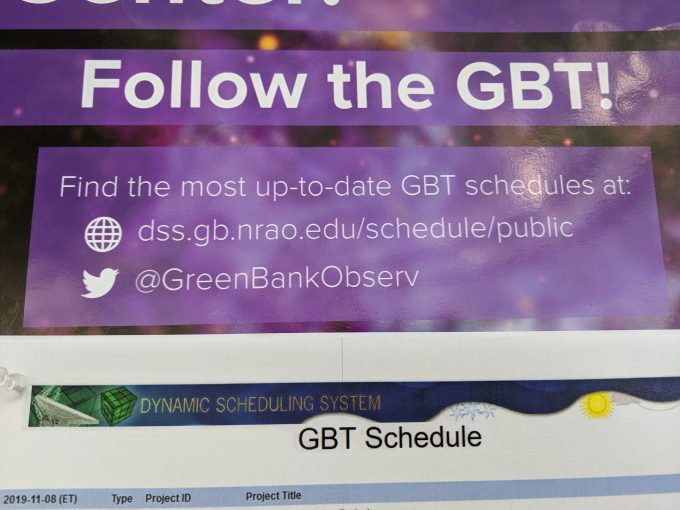
Address
Green Bank Observatory, 155 Observatory Rd, Green Bank, WV 24944
[…] paid for it. I also really enjoyed my horseback ride in Davis, but I really learned so much at the Green Bank Observatory that it makes my […]